issue contents
July 2013 issue

Cover illustration: Structure of Escherichia coli AdhP (ethanol-inducible dehydrogenase) with bound NAD (Thomas et al., p. 730).
editorial
Free 

scientific comment
All the crystallization communications published in Acta Cryst. F in 2012 were analysed. Details of the analysis are presented, along with some suggestions for making this type of publication more useful.
structural communications
The crystal structure of the archaeal peroxiredoxin from P. horikoshii was determined at a resolution of 2.25 Å and compared with that of a homologous protein from A. pernix.
PDB reference: peroxiredoxin, 3w6g
The crystal structure of Mast-M1 has been determined at 2.0 Å resolution and provides the first detailed structural description of a TOG-like domain.
PDB reference: Mast-M1, 4g3a
The crystal structure of E. coli AdhP (ethanol-inducible dehydrogenase) in complex with NAD is reported.
PDB reference: AdhP–NAD complex, 4gkv
The structure of the cellulose-binding module of the C. thermocellum cellulosome-integrating protein A scaffoldin with portions of the C- and N-terminal flanking linker regions has been determined at 1.98 Å resolution.
Crystal structures of MauG in complexes with MADH with its TTQ cofactor in the quinone and quinol forms are reported.
The structures of two Tiam1 PHn-CC-Ex domain variants have been determined to resolutions of 1.98 and 2.15 Å. Biochemical data indicate that this domain binds the coiled-coil domain of Par3b. SAXS data are in excellent agreement with the structures, indicating that the solution and crystal structures are very similar.
Comparisons between polymorphic structures in space groups P1, P212121 and P43212 highlight the conformational stability of tetrameric CAT-3 and reveal a distortion in the tetrameric structure that has not previously been described.
crystallization communications
The RNA pseudouridine synthase TruB catalyses the isomerization of uridine to pseudouridine at residue 55 of elongator tRNAs. Here, the expression, purification, crystallization and preliminary crystallographic analysis of TruB from Streptococcus pneumoniae are reported.
The purification and crystallization of the isolated toxin VapC (MvpT) from the VapBC toxin–antitoxin complex of the pathogen S. flexneri are reported. The crystals belonged to space group H3 and diffracted to 1.9 Å resolution.
This report describes the crystallization and X-ray diffraction analysis of a regulatory domain of the Toll-like receptor signalling adaptor TRIF/TICAM-1 and its SeMet-labelled mutant containing two additional Met residues. This domain is unrelated in sequence to any protein of known structure.
Robo receptors participate in the orchestration of several developmental responses, most notably axonal guidance in the central nervous system (CNS). Here, the expression, derivatization, crystallization, and experimental phasing of the extracellular juxtamembrane segment of the human Robo1 receptor are described.
As a thermostable esterase with cold adaptation, EstL5 might be of significant industrial interest and value in scientific research. In order to provide new insights into the structure–function relationship of EstL5 and to help better understand the biochemical data, a project to determine the three-dimensional structure of this enzyme was initiated.
The N-terminal carbohydrate-binding domains of Flo1p and Lg-Flo1p from two different Saccharomyces spp. were overexpressed in E. coli, purified and crystallized in different conditions. A preliminary X-ray analysis of the crystallized flocculin–protein complexes is reported in this work.
Human histidine triad nucleotide-binding protein 2 (hHINT2) was cloned, expressed in E. coli, purified and crystallized. The initially obtained crystals of hHINT2 were used for a diffraction experiment and data were collected to 2.83 Å resolution.
The kinase domain of AtMAP4Kalpha2 was cloned, expressed, purified and crystallized. The crystals diffracted to 1.9 Å resolution and belonged to space group C2221, with unit-cell parameters a = 55.27, b = 82.93, c = 133.15 Å.
The GRASP65 GRASP domain from R. norvegicus has been expressed, purified and crystallized. The crystals belonged to space group P21212, with unit-cell parameters a = 44.99, b = 104.29, c = 37.93 Å, and diffracted to 2.0 Å resolution.
Open  access
access
 access
accessA truncated mutant missing the first 62 residues of the N-terminal, cytoplasmic domain of the sodium-bicarbonate NBCe1-A cotransporter crystallizes in space group P31 with pseudo-P3121 symmetry and a hemihedral twin fraction of 33.0%. Twinned fractions and twin-pair statistics over binned resolutions confirm that the calculated twin fraction is associated with hemihedral twinning and not to non-crystallographic symmetry.
The AAA+ σ54 interaction domain of FlrC from V. cholerae has been cloned, overexpressed, purified and crystallized in a heptameric form. Crystals belonging to space group P212121 produced diffraction data to 2.8 Å resolution.
The N-terminal PDZ-like domain of the human peripheral nervous system myelin protein periaxin has been crystallized and preliminary diffraction data are reported. The periaxin crystals diffracted X-rays to 2.85 Å resolution using synchrotron radiation.
Rice L-galactose dehydrogenase was crystallized and X-ray diffraction data were collected to 1.2 Å resolution.
The deaminase AmnE from Pseudomonas sp. AP-3 was expressed in E. coli and purified. Crystallization and preliminary X-ray crystallographic analysis were performed for this recombinant enzyme.
laboratory communications
An automated spreadsheet-based solution for macromolecular crystallization screening is presented that allows easy formulation and optimization of crystal screens via multiple approaches, including incomplete-factorial and grid screening.
The pH of a solution is an important parameter in crystallization that needs to be controlled in order to ensure success. In this study, the effects of the buffer and protein solution pH values on the results of screening are systematically investigated.


 journal menu
journal menu













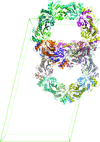

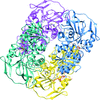


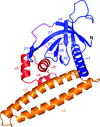
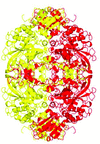



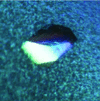









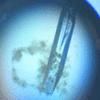


![[publBio]](/logos/publbio.gif)





